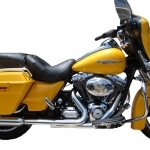Screws vs Nails on Fiber Cement Panels?

I’m preparing to replace T1-11 on the south facing side of my house that has deteriorated (the rest of the exterior walls are brick veneer). My first thought is to replace the T1-11 with APA rated 7/16 OSB, install a rain screen on that and then top it off with 4×8 sheets of stuco finish surface fiber cement panels. Single story ranch, gable roof, 30 ‘ above Fema flood/ storm surge plane. Southern pine 2×4 studs, Slab foundation
My question deals with holding power of wafer head screws (as approved by the Texas Windstorm Insurance Agency) versus a collated round head ring shank nail of the same length. Everyone knows that screws always have more holding power than nails when joining 2 pieces of wood assuming you’re using a course thread screw.
When you throw fiber cement in the equation (which does not have the shear strength of wood) what is the result on holding power of the fasteners? Do the heads pull through if you use screws, during a heavy (125+) wind gust?
It’s clear that a properly sized nail gun is certainly going to get the job done faster than a collated screw gun. But since I live in a hurricane zone (Texas Gulf Coast) and I’m not paying anyone to install it (DIY), my primary concern is holding power, not money or time.
Further, since I’m only a mile from the GULF, all sources say use SS fasteners, so the price of poker goes up there too.
The rainscreen gap is intended to be 3/8″ give or take so part of the worry is possible air surges popping the panel off from the inside out.
Has anyone out there wrestled with this alligator before? If it were your house what would you do?
Ken



















Replies
There would be no real advantage to screws so stick with nails. We use 6# stainless ring shank nails that are just abaout as hard to pull out as a screw. Also, screws don't do well in cement board. They tend to make a mess around the screw head that has to be sanded flush and even screws with sharp points are hard ot start.
I'm HUGE into using screws for everything... but here I have to agree with using a ring shank SS.
I did use screws with HardiPanel, but I didn't like the results very much. You could use tile backer cement board screws too if you were set on that path - slightly bigger head. I think eventual rust is your biggest concern too, that's why I'm thinking SS.
Thanks for the responses!
I've definitely given up on the idea of using SS screws and will go with the SS ring shank. Make that the USS Ring Shank!
Gotta love those guys at Maze & Indy for making good stuff right here in the USA. Let's get back to where we used to be. The brain trust pundits certainly got it wrong when they said, "well, we don't need to make anything anymore we'll just flip burgers, mess with computers and do lots of service stuff". It was wrong then & it's wrong now.
Someone should lynch the idiot in California who gave the huge bridge job to the Chinese & then lynch the Governor for not saying NO! damn it! We will have Americans rebuild our infrastructure & no one else! Oh yeah, I forgot, Then we should lynch every CEO who sent jobs overseas so they could get a bigger paycheck!
Ken
Dam right! And we should stop American companies from building bridges, buildings, roads, stadiums, houses and power plants or drilling for oil in foreign coutries too! And we should stop the whole low bid process for homeowners and force them to use a local contractor and local wood, concrete, windows, shingles, plumbing fixtures and siding on their homes regardless of costs!
Sounds like you made up your mind re nails, but just my $.02 worth. Screws will work fine in cementitious panels IF you use the right product and methodology. I've done several architectural panel installs with exposed screws and metal channel reveals at panel edges. They look good in the finished product - if you like that contemporary manmade expressed finish style. The extra labour is significant, though. Screw pattern must be carefully laid out, and clearance holes need to be pre-drilled, best done with a masonry bit in a hammer drill (rather than a rotary hammer). The clearance holes should be oversized to allow for expansion/contraction movement. The screws I've used are stainless roofing style screws with integral metal and neoprene washers, and are not available in collated form as far as I could tell. The panels are fixed over a rain screen with 1x or 2x nailers covered with EPDM membrane and then metal reveal flashing. As with any rain screen system, flashing details at intersections, terminations and openings become very important. Have a careful think through all the possible scenarios you'll encounter and have a flashing/trim solution drawn up for each of them, then make sure the flashing occurs in the correct order for proper building envelope integrity.
LOL! I wish!